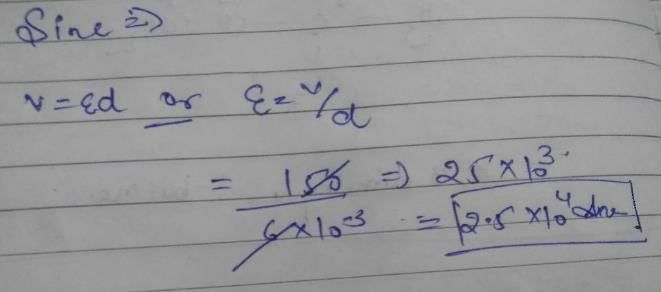Test: Capacitors - NEET MCQ
10 Questions MCQ Test Topic-wise MCQ Tests for NEET - Test: Capacitors
In a parallel plate capacitor the potential difference of 150 V is maintained between the plates. If distance between the plates is 6 mm, what will be the electric field at points A and B?
The distance between the plates of a capacitor is d. What will be the new capacitance if a metal plate of thickness d/2 is introduced between the plates without touching them
What will be the effect on capacitance, if the distance between the parallel plates reduced to one-third of its original value?
What should be the radius of an isolated spherical conductor so that it has a capacity of 2μF?
Work done in placing a charge of 8 x 10-18 C on a condenser of capacity 100 microfarad is
Capacitor preferred when there is a high frequency in the circuits is ______
Work done in charging a capacitor is stored in it in the form of electrostatic energy, given by
|
9 docs|1259 tests
|





















